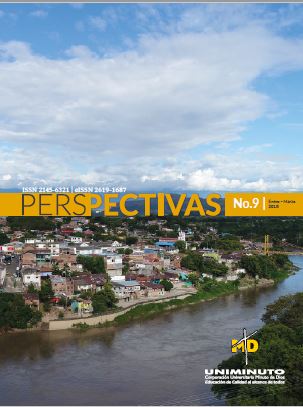Proposal for the development of constructive processes with the inclusion of biomaterials in priority housing in the municipality of Girardot, Cundinamarca
Main Article Content
Abstract
The municipality of Girardot has a number of political, administrative, environmental, climatic, economic, social, infrastructure and development difficulties that keep it from being at the forefront of the current conditions of growth and modernity of the territory. Therefore, multiple factors affect the compliance with the legal, technical and social framework that the overall community requires. As an example, there is a deterioration in the infrastructure of its buildings, the road network and tourist sites, given that the structural conditions have a number deficiencies, which causes the deterioration of its useful life. In some cases, these deficiencies are associated with the adverse weather conditions of the city. That is how, aiming to present alternatives that contribute to the improvement of the quality of life of the people of Girardot, without generating an economic increase in public expense for the contractor or even for those who wish to access them, we propose new housing projects, in order to formulate a self-sustaining, priority-interest alternative, which in its great majority is manufactured with biomaterials originated in the area.
Article Details
Section
How to Cite
References
Camuñas, A. (1969). Materiales de construcción (vol. II). Cádiz: Guadiana.
Gómez, L. (s. f). Comienza era de vías que se harán con llantas usadas. El Tiempo. Recuperado de http://www.eltiempo.com/economia/sectores/infraestructura-en-colombia-vias-hechascon-llantas-usadas/16483926.
Góngora, A. (2013). Secretaría de Infraestructura informó su gestión en Girardot. Extra. Recuperado de http://girardot.extra.com.co/noticias/ politica/secretar%C3%ADa-de-infraestructurainform%C3%B3-su-gesti%C3%B3n-en-girardot-67793.
Guevara, C. (2015). Cada día más de 2050 llantas terminan invadiendo el espacio público terminan en andenes, separadores, parques, humedales e incluso frente a las casas. El Tiempo. Recuperado de http://www.eltiempo.com/archivo/documento/CMS-15317455.
Ministerio de Ambiente, Vivienda y Desarrollo Territorial. (2010). Resolución 1457 de 2010: Por la cual se establecen los Sistemas de Recolección Selectiva y Gestión Ambiental de Llantas Usadas y se adoptan otras disposiciones. Diario oficial. Recuperado de https://www.arlsura.com/ images/stories/documentos/res1457_2010.pdf.
Municipio de Girardot. (s. f). Plan de Gestión Integral de Residuos Sólidos. Recuperado de http:// girardot-cundinamarca.gov.co/apc-aa-iles/38646139383934306166613535613565/planeacion.pdf.
Redacción El Tiempo. (1999). Basuras tienen en jaque a Girardot. El Tiempo. Recuperado de http://www.eltiempo.com/archivo/documento/MAM-956490.
Sanz, E. (s. f). Cuántos neumáticos se tiran cada año a la basura. Muy Interesante. Recuperado de http://www.muyinteresante.es/curiosidades/ preguntas-respuestas/cuantos-neumaticos-setiran-cada-ano-a-la-basura-941375271546.
Semarnat. (2007). ¿Y el medio ambiente? Problemas en México y en el mundo. Ciudad de México: Editorial Gedisa.
Secretaría de Movilidad, Secretaría Distrital de Ambiente. (2011). Resolución 6981 de 2011: Por la cual se dictan lineamientos para el aprovechamiento de llantas y neumáticos usados, y llantas no conforme en el Distrito Capital. Diario oficial. Recuperado de http://www.alcaldiabogota.gov. co/sisjur/normas/Norma1.jsp?i=45358.

